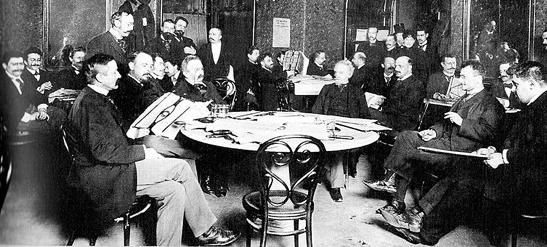In a letter addressed to Otto Wesendonck, written in 1882 after his return from summering in the Salzkammergut, Meingast announces his vision for a new form of musical theater, the Nichtvölligaberfastgesamtkunstwerk (the ‘ever-so-slightly-less-than-complete-artwork’). He writes:
“In Wagner the leveling tendency consumes itself. How he oppresses [schlägt nieder] the bassoon! In halting the flywheel one becomes part of the mechanism.”
After several paragraphs complaining of the quality of schnitzel in Lemberg (“too mushy [breiig]”), Meingast reveals that he has begun work on a musical setting of Troyes’ Cligès designed to “address this fundamental question” posed by Wagner. The work was to involve leitmotiven, but these would consist of single notes, so as to be “at once essential and also entirely invisible”. Repetition was to be the primary means of development. The work was to involve dance, fragrant aromas (“Lemberger grapes in sunshine,” “smoked birch twigs”), and specially designed seats (“with a manifest mould complementing most physiques”), but no visual images.
The letter was not sent.
